To calculate the standard deviation of stock returns: Determine the mean return by summing returns divided by total observations, evaluating average return. Calculate squared differences from the mean to quantify return variability accurately. Sum the squared differences to capture dispersion from the mean, vital for the standard deviation. Divide the sum by data points to standardize the dispersion calculation and guarantee accuracy. Taking the square root of the result provides the standard deviation reflecting risk levels. This step-by-step guide ensures precise risk assessment and informed investment choices. Understanding these calculations enhances insight into stock performance and volatility levels.
Mean Return Calculation
In the domain of financial analysis, the calculation of the mean return serves as a fundamental step in evaluating the performance of a stock over a specified timeframe. The mean return is computed by summing all individual returns and then dividing by the total number of observations. This statistical measure provides insight into the average return of a stock during a particular period, offering a central point of reference for further examination.
Calculating the standard deviation of stock returns heavily relies on the mean return. Standard deviation measures the dispersion of individual returns around the mean, indicating the volatility or risk associated with the stock. By understanding how each return differs from the average return, investors can gauge the level of fluctuation or unpredictability in the stock's performance.
In essence, the mean return acts as the anchor point for evaluating the standard deviation, enabling investors to grasp not only the central tendency of the stock's performance but also its level of variability. This foundational step is essential for constructing a detailed risk-return profile of the stock.
Squared Differences Calculation
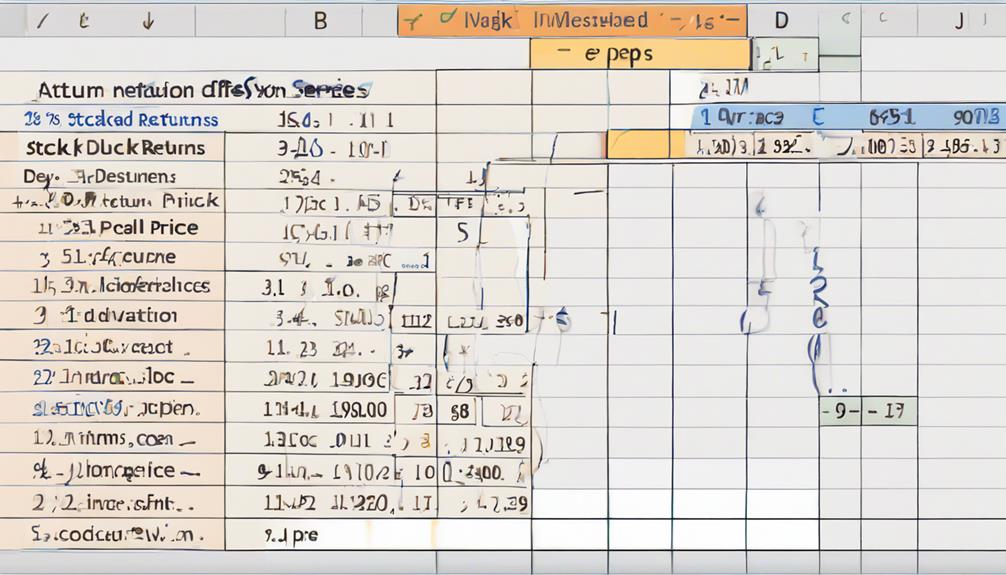
When calculating the standard deviation of stock returns, understanding the concept of squared differences is essential.
This step involves squaring the deviations between each stock return and the mean return to emphasize the dispersion from the average.
Squared Differences Explained
To grasp the essence of squared differences within the context of standard deviation calculation for stock returns, one must comprehend how these values encapsulate the dispersion of individual data points from the mean with a focus on the magnitude of deviations.
Squared differences in standard deviation calculations quantify the variability of returns concerning the average return by measuring the deviation of each data point from the mean squared. The process involves subtracting each data point from the mean and then squaring the result. By squaring the differences, all values become positive, emphasizing the magnitude of deviations.
Summing these squared differences is a critical step in determining the variability of stock returns, providing insight into the spread of data points around the mean in a standardized manner.
Importance in Calculations
Emphasizing the quantification of individual return deviations from the average, the calculation of squared differences plays a pivotal role in evaluating the variability of stock returns. By squaring the deviations from the mean in the standard deviation formula, each difference is transformed into a positive value, ensuring that both positive and negative variances contribute proportionally to the overall dispersion.
The sum of these squared differences is essential in determining how spread out the returns are from the average, offering insights into the volatility and risk associated with the stock. Accuracy in calculating squared differences is paramount for obtaining a precise standard deviation, which is a fundamental measure of risk and variability in investments.
Calculating squared differences is a foundational step in accurately determining the standard deviation of stock returns.
Formula for Accuracy
Building on the foundation of squared differences as a key component in evaluating stock return variability, the formula for accuracy involves the calculation of individual deviations from the mean, squared to guarantee positive values for precise standard deviation determination.
- Squared differences are calculated by subtracting each data point from the mean and then squaring the result.
- This step helps quantify the dispersion of data points from the average return.
- Squaring the differences guarantees positive values are obtained for accurate standard deviation calculation.
- The sum of squared differences is vital in determining the variability of stock returns.
- Accurately calculating squared differences is essential for obtaining the precise standard deviation of stock returns.
Summing Squared Differences
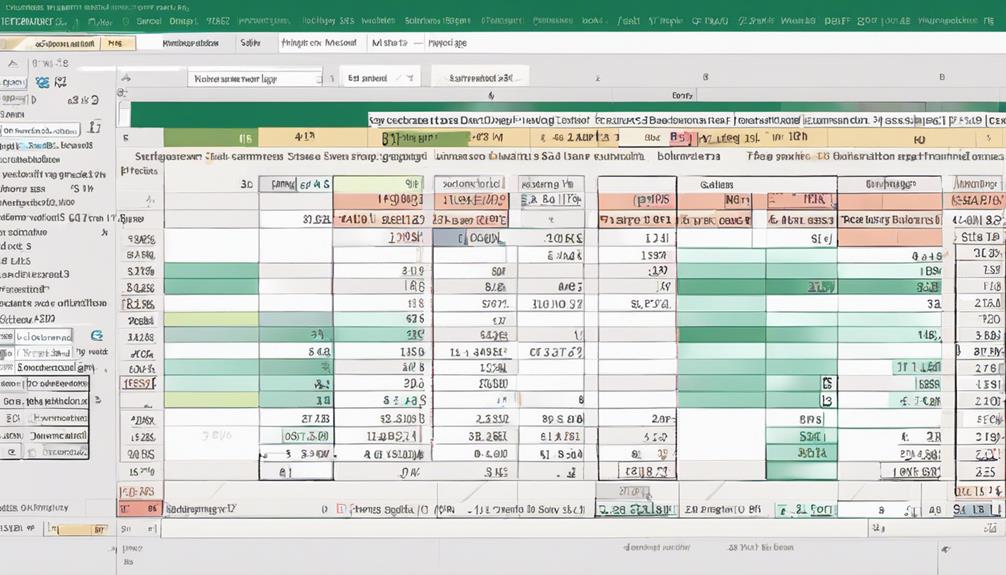
The sum of squared differences is a fundamental aspect of calculating the standard deviation of stock returns. By squaring the deviations from the mean, we guarantee positive values and accentuate the extent of variability in the data.
Accurate computation of this summation is vital for deriving the variance and standard deviation, providing a quantitative measure of the dispersion in stock returns.
Squared Differences Explained
To capture the variability in stock returns effectively, squaring the differences between each return and the mean is an essential step in quantifying the dispersion of returns from the average. This process of summing squared differences yields vital insights into the distribution of returns and is necessary for calculating the variance and, subsequently, the standard deviation. Here are some key points to understand about squared differences:
- Squaring the variances emphasizes the magnitude of deviations.
- The sum of squared differences provides a measure of total dispersion.
- Variability is encapsulated through the sum of squared differences.
- Individual return deviations are squared to account for positive and negative differences.
- Understanding the squared differences aids in comprehending the overall variability of stock returns.
Importance of Squaring
Emphasizing the squared differences in stock returns from the mean is crucial for capturing the total variation and magnitude of deviations in stock returns effectively. By squaring the variances, the negative values are eliminated, ensuring that each deviation contributes positively to the overall sum.
Summing the squared differences provides a thorough measure of how far individual stock returns fluctuate around the mean, giving weight to larger deviations. This process accurately reflects the spread of data points and prevents cancellations that may occur when dealing with positive and negative deviations.
The importance of squaring lies in highlighting the significance of deviations from the mean in stock returns analysis, allowing for a more precise calculation of standard deviation.
Calculating Sum Accurately
In stock returns analysis, a fundamental aspect of accurately calculating the standard deviation involves meticulously summing the squared variances between each return and the mean. This step is pivotal for determining the dispersion of returns in the dataset, quantifying variability and volatility for risk assessment.
To calculate the sum accurately, follow these steps:
- Square the difference between each return and the mean.
- Guarantee positive values to emphasize deviation.
- Sum the squared differences diligently.
- Quantify the variability in stock returns.
- Derive a reliable standard deviation value.
Dividing by Data Points
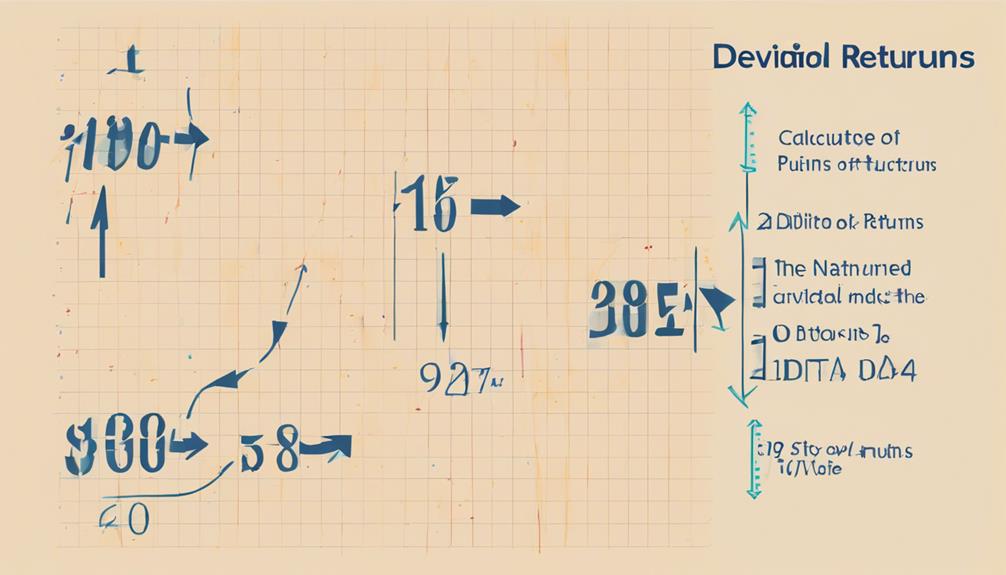
Dividing by the number of data points in the standard deviation calculation is a vital step that normalizes the sum of squared differences to accurately reflect the dispersion of returns based on the entire dataset. This division guarantees that the standard deviation calculation takes into consideration the full extent of variation present in the data.
When dividing by the total number of data points minus one, as in the formula for sample standard deviation, it takes into consideration the degrees of freedom in the calculation. By dividing by the appropriate value, we adjust for the fact that with fewer degrees of freedom, there is a tendency to underestimate the true population standard deviation.
Ensuring the correct division by the total data points is essential for obtaining a reliable measure of the variability of stock returns. This step is fundamental in providing a standardized measure of risk and volatility in stock returns, which is crucial for making informed investment decisions.
Taking the Square Root
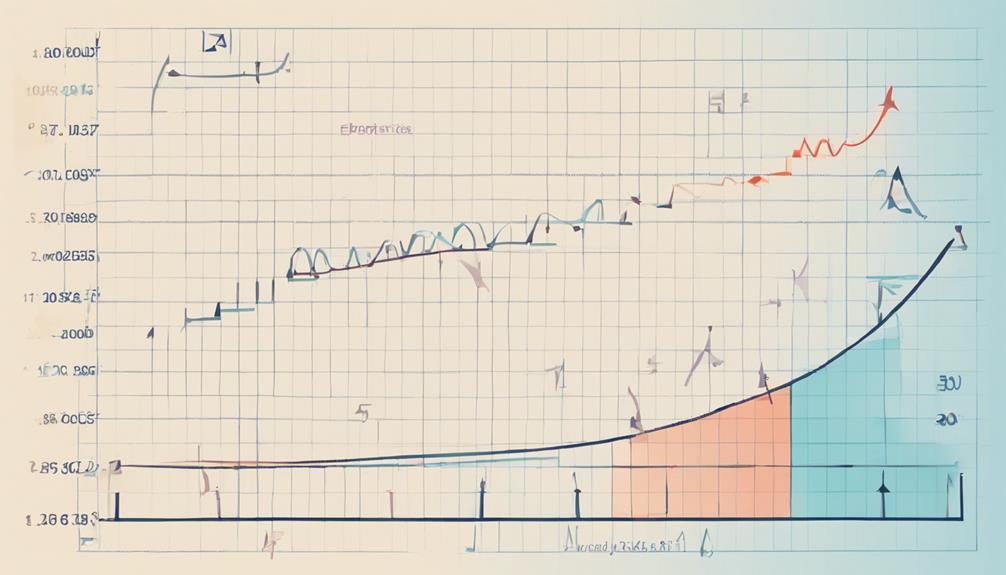
Upon completing the calculation of standard deviation, the next vital step involves extracting the square root to determine the measure of dispersion in stock returns. This mathematical operation is crucial in converting the variance, which consists of squared differences, back to the original unit of measurement for easier interpretation.
By taking the square root, we obtain a value that signifies the average distance of data points from the mean in a more understandable form, aiding in understanding the spread and variability of stock returns concerning the average return. The square root of the variance is essential for determining the standard deviation, a key metric for assessing risk and volatility in stock investments.
- Helps in converting the variance (squared differences) back to the original unit of measurement.
- Obtains a value representing the average distance of data points from the mean.
- Aids in understanding the spread and variability of stock returns.
- Crucial for determining the standard deviation, a key metric for assessing risk.
- Essential in evaluating volatility in stock investments.
Understanding Volatility Assessment
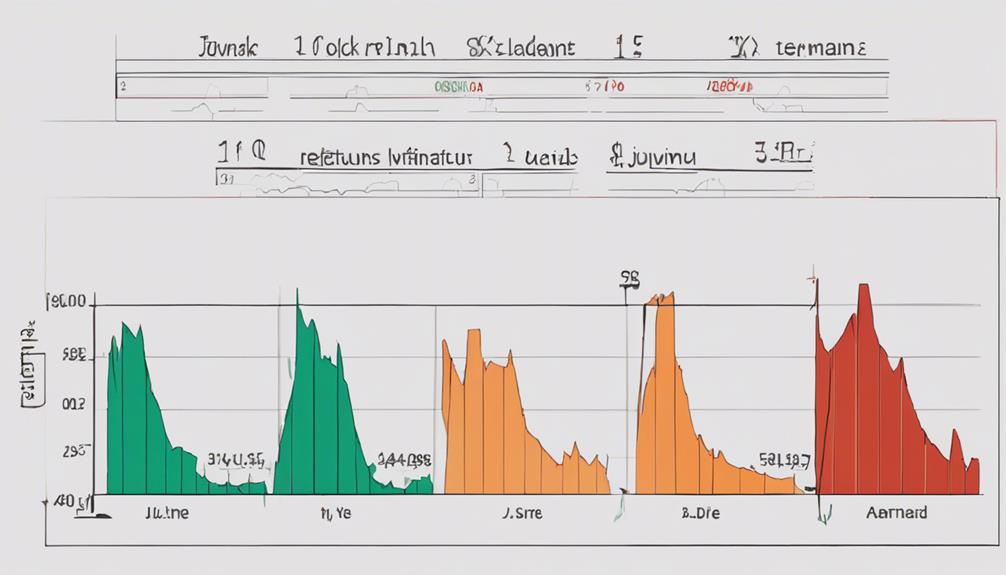
Utilizing standard deviation as a fundamental metric, investors gain valuable insights into the degree of risk inherent in stock returns through a thorough assessment of volatility. Standard deviation is a measure that helps in finding the standard or average level of dispersion of stock returns around the mean return.
In the stock market, this metric serves as a key indicator of the level of volatility present in a particular stock or portfolio. When the standard deviation of stock returns is higher, it indicates that the prices have experienced more significant fluctuations, suggesting a higher level of risk associated with those returns.
Investors rely on standard deviation to assess the stability and predictability of stock returns over a specific period, enabling them to make informed decisions regarding portfolio diversification and risk management strategies. Understanding volatility through standard deviation is essential for prudent risk analysis and optimizing investment decisions in the dynamic stock market environment.
Risk Analysis

Continuing from the discussion on understanding volatility assessment, an important aspect in stock market analysis is evaluating the level of risk through thorough risk analysis methodologies. Risk analysis plays a significant role in evaluating the potential uncertainties and fluctuations in stock returns.
Here are key points to contemplate in conducting effective risk analysis:
- Quantifying Risk: Standard deviation helps measure the level of risk associated with stock returns.
- Variability Assessment: It gauges the variability of stock returns around the average return, providing insights into potential price fluctuations.
- Risk Indication: Higher standard deviation in stock returns indicates a greater potential for price swings and uncertainty.
- Essential Metric: Standard deviation is an essential metric for investors to evaluate and manage risks in their stock investments.
- Uncertainty Understanding: By calculating standard deviation, investors can gain a better understanding of the level of uncertainty and risk present in their stock holdings.
Incorporating risk analysis methodologies, especially through standard deviation calculations, is important for making informed investment decisions and managing risk exposure effectively in the stock market.
Importance of Standard Deviation
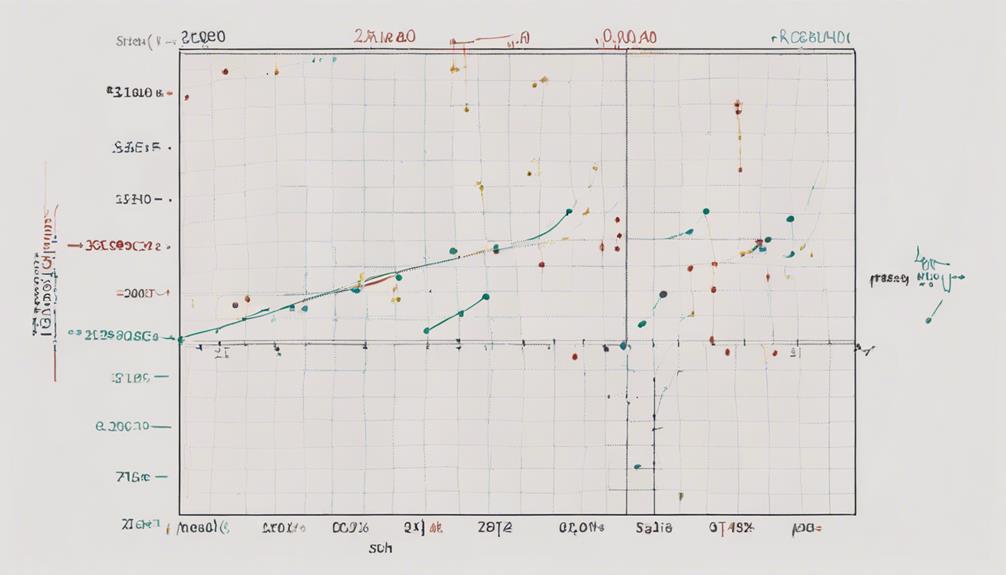
What critical role does standard deviation play in evaluating the risk and variability of stock returns for investors?
Standard deviation is a fundamental metric in risk assessment within the domain of investment decisions. By quantifying the variability of stock returns, it provides investors with a measure of the level of risk associated with a particular stock. Understanding standard deviation is paramount for investors as it helps them gauge the potential uncertainty and risk exposure in their portfolios.
A higher standard deviation signifies greater variability in returns, indicating a higher level of risk but also the potential for higher returns. Investors utilize standard deviation as a tool to compare the risk levels of different stocks, enabling them to make informed investment decisions based on their risk tolerance and investment objectives.
Essentially, standard deviation is an important factor in evaluating the risk-return profile of stocks and plays a pivotal role in shaping investment strategies.
Informed Investment Decisions
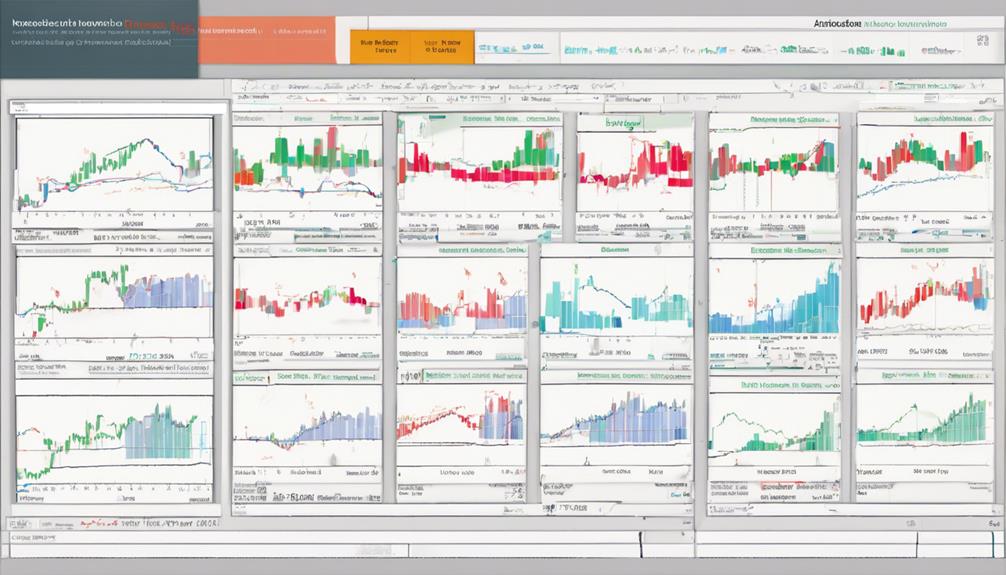
In the domain of investment decisions, a fundamental understanding of standard deviation empowers investors to make well-informed choices based on historical performance data. By analyzing the standard deviation of stock returns, investors gain valuable insights into the risk and volatility associated with a particular investment. Here are five key points highlighting the significance of standard deviation in making informed investment decisions:
- Standard deviation quantifies the variability of stock returns, aiding in predicting future fluctuations.
- Understanding standard deviation helps investors assess and compare the level of risk across different investment opportunities.
- Analyzing the standard deviation of stock returns provides a statistical measure to evaluate the dispersion of returns.
- Investors can utilize standard deviation calculations to determine the potential downside and upside risks of an investment.
- Standard deviation serves as an essential tool for making sound investment choices by considering the historical performance and associated risks.
Variability Insights

Analyzing the variability of stock returns through the standard deviation provides important insights into the historical performance and risk profile of investments.
Standard deviation, as a measure of dispersion around the average return, offers investors a way to comprehend the volatility of a stock's past performance. A higher standard deviation signifies a riskier investment with the potential for greater returns, highlighting the trade-off between risk and reward.
This metric is essential for risk assessment, aiding investors in evaluating the potential downside of an investment. Additionally, standard deviation plays a vital role in portfolio diversification strategies, enabling investors to spread risk across different assets based on their historical variability.
Step 1: Calculate the Average Return
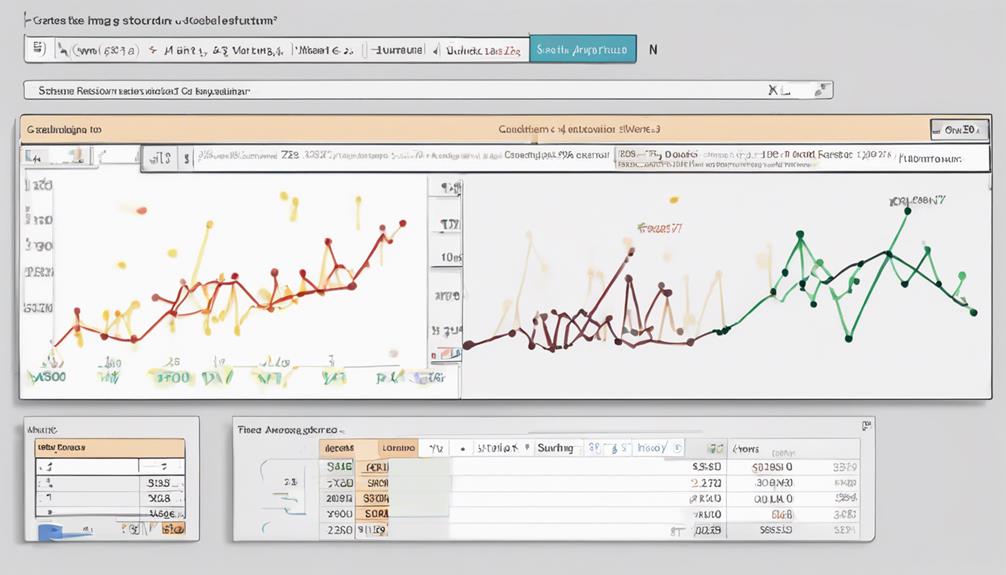
Understanding the variability of stock returns through the standard deviation requires an initial calculation of the average return, serving as a foundational metric for further analysis. The average return, often referred to as the mean of the data, provides insights into the central tendency of stock performance.
To calculate the average return:
- Sum up all the stock returns observed over a specific period.
- Divide the total sum of stock returns by the number of observations to find the mean return.
- The average return acts as a reference point to evaluate how individual returns deviate from this central value.
Accurate computation of the average return is essential for evaluating the deviation of individual returns from the mean. This step is fundamental in understanding the variability and risk associated with stock investments, laying the groundwork for subsequent calculations in determining the standard deviation.
Step 2: Find Squared Differences
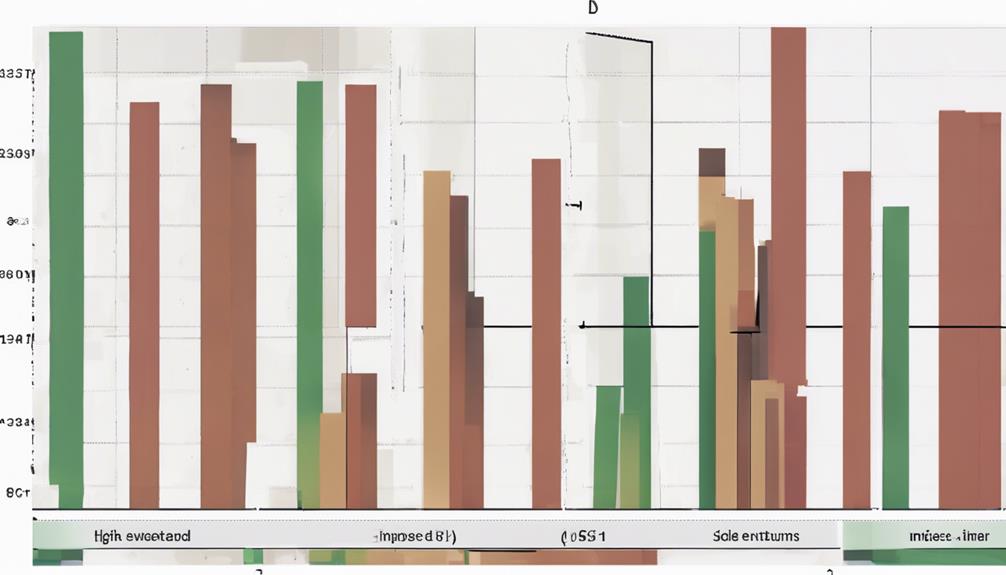
When calculating the squared differences in stock returns, the focus is on each data point's deviation from the mean return.
By squaring these differences, the negative and positive deviations are both accounted for, preventing them from offsetting each other.
This step is essential in determining the overall variability and dispersion of data points in the stock return dataset.
Calculate Squared Deviations
In the process of determining the squared deviations for stock returns, each individual return is subtracted from the mean return value and the result is squared to quantify the standardized deviation. This step is vital in analyzing the variability of returns from the average in a consistent format.
Here is how the calculation of squared deviations aids in understanding the dispersion of returns:
- Squared differences are obtained by subtracting each return from the average and squaring the result.
- This step quantifies how much each return deviates from the mean in a standardized manner.
- Squaring the differences guarantees all values are positive, preventing cancellation of negative deviations.
- The squared differences represent the variability of returns from the average in a consistent format.
- This calculation prepares the data for further analysis to determine the overall dispersion of returns.
Determine Squared Residuals
To determine squared residuals, one must square the discrepancies between each stock return and the mean return, highlighting the significance of deviations in the calculation process. Squaring these differences is crucial as it emphasizes the impact of deviations from the average return and guarantees that both negative and positive disparities contribute equally to the overall dispersion.
The sum of squared residuals plays a critical role in evaluating the variability of stock returns concerning the mean. This process readies the data for subsequent steps in calculating the standard deviation, providing a more precise representation of the distribution of returns and enabling investors to better comprehend the level of risk associated with a particular stock.
Step 3: Add Squared Differences
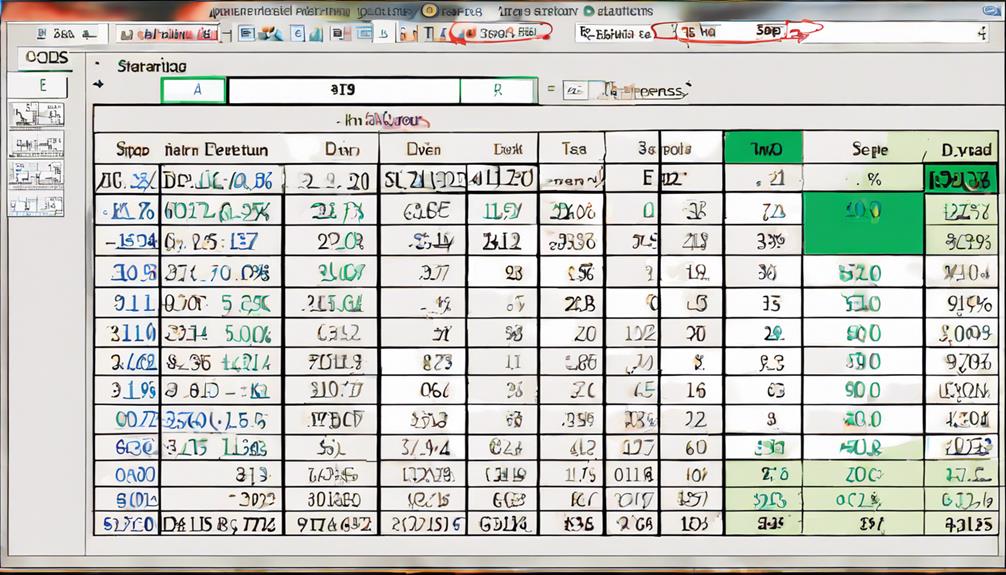
This pivotal step in calculating the standard deviation of stock returns involves computing the square of the difference between each return and the mean, culminating in the accumulation of all squared differences to gauge the dispersion of returns from the average. Adding the squared differences is vital for accurately determining the variability of stock returns. The sum of squared differences is used to assess the spread of data points around the mean in stock return calculations.
- Helps quantify the dispersion of returns from the average.
- Vital for accurately determining the variability of stock returns.
- Assists in understanding the spread of data points around the mean.
- Essential in evaluating how far individual data points are from the mean.
- Aids in visualizing the distribution of returns and their relationship with the mean.
Step 4: Divide by Data Points
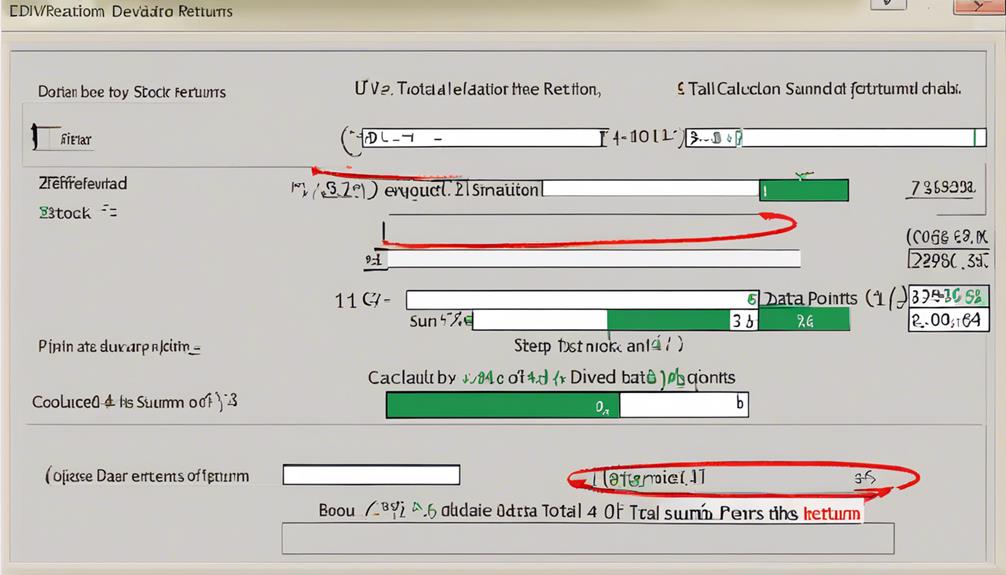
Utilizing a normalization technique through division by the number of data points minus one is an important step in the calculation process for determining the standard deviation of stock returns.
Dividing the sum of squared differences by the number of data points minus one standardizes the dispersion of data points based on the sample size. This step of dividing by the sample size takes into account the number of observations in the dataset, ensuring that the squared differences are appropriately scaled for an accurate standard deviation calculation.
By dividing by the sample size, the variability and risk associated with the stock returns are precisely quantified. This division step plays a vital role in the calculation, as it adjusts the squared differences to reflect the influence of each data point in the dataset effectively.
Ultimately, dividing by the number of data points minus one is a fundamental aspect of calculating the standard deviation of stock returns, providing a key metric for evaluating the volatility and potential returns of a stock.
Step 5: Take the Square Root

The final step in calculating the standard deviation of stock returns involves taking the square root of the result obtained after dividing the sum of squared differences by the number of data points minus one. This essential step converts the variance back to the original units of measurement, providing a more meaningful interpretation of the data.
By taking the square root, the standard deviation value, representing the spread of stock returns, is obtained in the same units as the original data, aiding in understanding the dispersion of returns in a more interpretable format. Additionally, this operation quantifies the volatility or risk associated with stock returns, offering insights into the potential fluctuations in investment returns.
- Taking the square root helps convert the variance back to the original units of measurement.
- This step is crucial to find the final standard deviation value representing the spread of stock returns.
- The square root operation ensures the standard deviation is in the same units as the original data.
- It helps in understanding the dispersion of returns in a more interpretable format.
- By taking the square root, you obtain the standard deviation value that quantifies the volatility or risk associated with stock returns.
Frequently Asked Questions
How to Calculate Standard Deviation of Stock Returns?
Historical data analysis of stock returns involves calculating the standard deviation, essential for portfolio risk assessment and understanding financial market volatility.
How to Calculate Standard Deviation Step by Step?
Data analysis involves employing statistical measures in financial markets to determine the standard deviation of stock returns. This crucial metric helps assess the volatility and risk associated with an investment.
How Do You Find the Standard Deviation of a Stock Option?
To find the standard deviation of a stock option, historical data on its returns is essential. By analyzing these returns, investors can estimate the volatility associated with the option.
This volatility estimation is vital in understanding market trends and evaluating the risk of potential investments. Higher standard deviations indicate increased volatility and risk, emphasizing the significance of incorporating this metric into investment decision-making processes.
What Is the Standard Deviation of a Stock's Return a Measure Of?
The standard deviation of a stock's return serves as a vital volatility measurement in financial analysis. It provides insight into the extent of price fluctuations and risk associated with the stock, aiding in risk assessment and investment evaluation.
This statistical metric quantifies the deviation of a stock's returns from its average, allowing investors to gauge the potential variability of returns. Understanding the standard deviation of stock returns is fundamental for making informed investment decisions in the dynamic financial landscape.
Conclusion
To sum up, calculating the standard deviation of stock returns involves a series of steps:
- Finding the mean return.
- Determining squared differences.
- Summing these differences.
- Dividing by the number of data points.
- Finally, taking the square root.
By following these steps, investors can gain a deeper understanding of the volatility and risk associated with a particular stock, ultimately helping them make more informed investment decisions.


